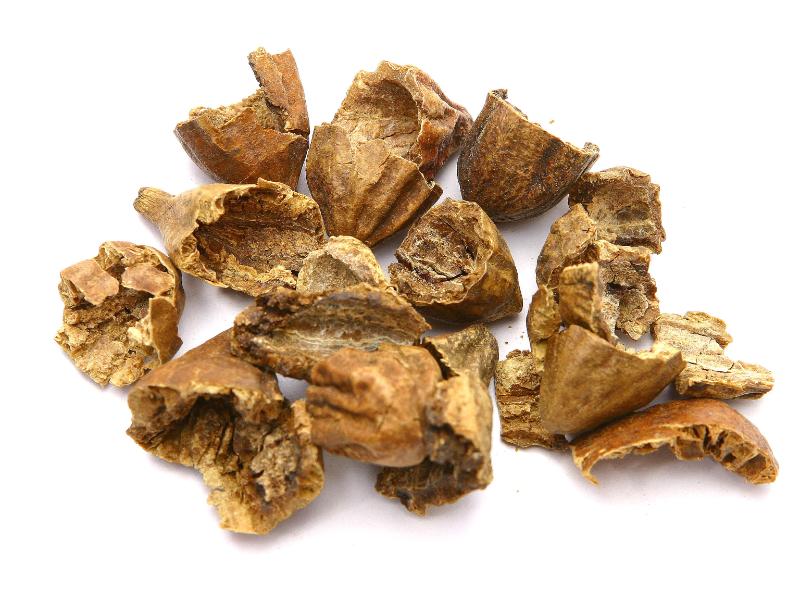Search in medicinals
Chebulae Fructus
Chebule
诃子 〔訶子〕 hē zǐ

Alternate English names: black myrobalan
Alternate Chinese names: 随风子 suí fēng zǐ; 柯子 kē zǐ; 诃黎 hē lí; 诃子肉 hē zǐ ròu; 诃黎勒 hē lí lè; 诃黎勒皮 hē lí lè pí; 诃子皮 hē zǐ pí
Kingdom: Plant
Origin in PRC Pharmacopoeia: Terminalia chebula Retz.; Terminalia chebula Retz. var. tomentella Kurt. (PRC Pharmacopoeia)
Origin in unofficial sources: Terminalia chebula Retz.*; Terminalia chebula Retz. var. gangetica Roxb.; Terminalia chebula Retz. var. tomentella Kurt.*
Use: Medicinal
Category: Exterior-resolving agents
Properties: Bitter, sour, astringent; balanced.
Channel entry: Lung, stomach, and large intestine channels.
Actions and indications:
- Astringes the intestines and checks diarrhea: Enduring diarrhea; enduring dysentery; prolapse of the rectum.
- Constrains the lung and relieves cough; disinhibits the throat and restores the voice: Enduring cough and loss of voice.
Dosage and method: Oral: 3–10g in decoctions. It is used roasted to astringe the intestines and check diarrhea, but the unprocessed form is better for constraining the lung, clearing heat, disinhibiting the throat, and restoring the voice.
Warnings: Contraindicated in the presence of exterior evils, and in internal cases of damp-heat
Product description: The dried fruit is elliptical or flask-shaped, 3–5 cm long, 1.5–2.2 cm wide. Its exterior surface is a grayish yellow and bears longitudinal wrinkles, and five longitudinal ridges. It is hard and dense, and does not easily break. It is yellow inside.
Quality: Hard, yellowish-brown fruits with a pronounced sheen are the best.
Production area: Yúnnán, Guǎngdōng.
Etymology: The original name 诃黎勒 (hē lí lè) comes from the Pashto halīla-ī–kābulī, myrobalan of Kabul, from which the English chebule also derives. The now more commonly used hē zǐ 诃子 is a simplification.
Back to search result Previous Next